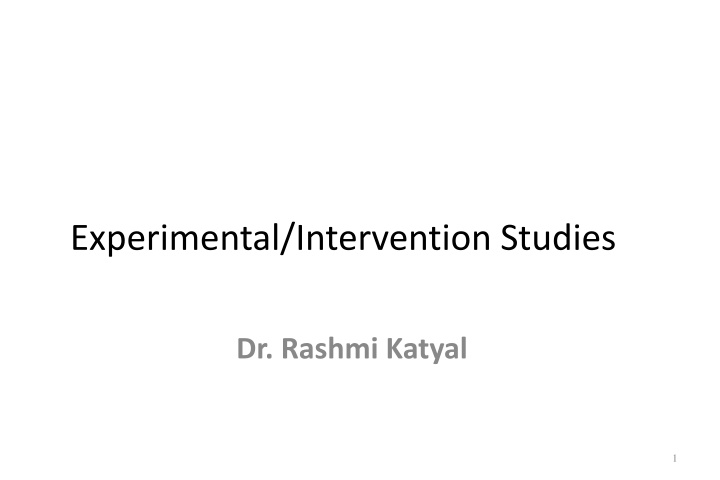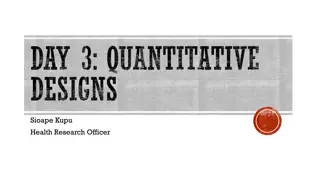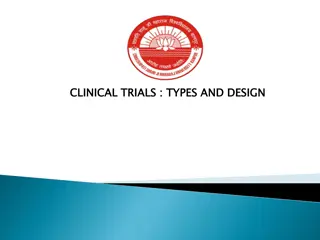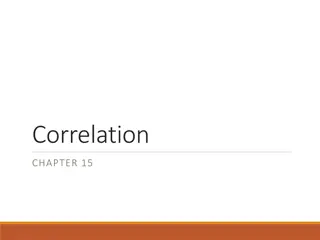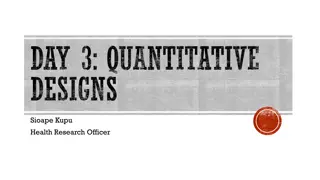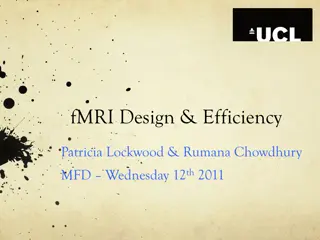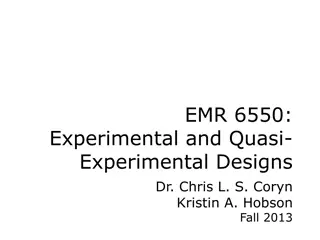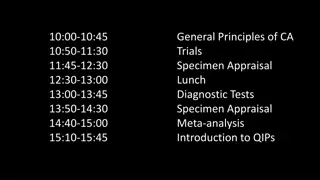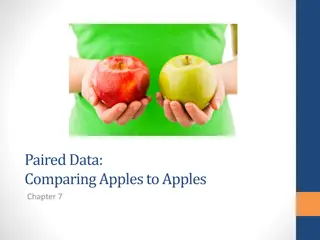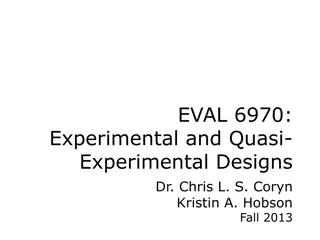Experimental and Intervention Studies: Understanding Study Designs
In this informative content, you will explore experimental and intervention studies led by Dr. Rashmi Katyal. Learn about study methodologies, the value of experimental studies, types of intervention studies, and the hierarchy of evidence. Discover the significance of experimental study designs and why they are performed, along with examples of experimental epidemiologic studies. Delve into primary and secondary prevention interventions and types of trials. Enhance your knowledge about the fundamental aspects of experimental and intervention studies.
Download Presentation

Please find below an Image/Link to download the presentation.
The content on the website is provided AS IS for your information and personal use only. It may not be sold, licensed, or shared on other websites without obtaining consent from the author.If you encounter any issues during the download, it is possible that the publisher has removed the file from their server.
You are allowed to download the files provided on this website for personal or commercial use, subject to the condition that they are used lawfully. All files are the property of their respective owners.
The content on the website is provided AS IS for your information and personal use only. It may not be sold, licensed, or shared on other websites without obtaining consent from the author.
E N D
Presentation Transcript
Experimental/Intervention Studies Dr. Rashmi Katyal 1
Learning Objectives To understand: What are experimental studies The value of such studies Types of interventional studies The basic methodology Pros and Cons of such studies 2
The hierarchy of evidence Ecological studies Cross sectional studies 3
Experimental Study Design A study in which a population is selected for a planned trial of a regimen, whose effects are measured by comparing the outcome of the regimen in the experimental group versus the outcome of another regimen in the control group. Such designs are differentiated from observational designs by the fact that there is manipulation of the study factor (exposure), and randomization (random allocation) of subjects to treatment (exposure) groups. 4
Why Performed ? 1. Provide stronger evidence of the effect (outcome) compared to observational designs, with maximum confidence and assurance 2. Yield more valid results, as variation is minimized and bias controlled 3. Determine whether experimental treatments are safe and effective under controlled environments (as opposed to natural settings in observational designs), especially when the margin of expected benefit is doubtful / narrow (10 - 30%) 5
Examples of Experimental Epidemiologic Studies Prophylactic vaccines tested on children populations to prove the efficacy of the vaccines in preventing the diseases (i.e., polio) Prophylaxis with drugs in preventing disease (i.e., penicillin to prevent rheumatic fever) Impact on health-related behavior and coronary heart disease in response to community-wide heart disease prevention intervention 6
Types of Intervention studies Primary prevention (Preventive trial) Avoid development of diseases Individual (Healthy person) Community Secondary prevention (therapeutic trial) Reduce morbidity and mortality in patients Individual (Patients) 7
Diagramtitel Types of trials Trial Controlled Not controlled Randomised Not randomised Blinded Not blinded 8
1.Randomised control Trial a.Clinical trial b.Preventive trials c.Risk factor trials d.Cessation experiments e.Trial of etiological agents f.Evaluation of health services 9
Clinical trials Evaluate therapeutic agents like drugs Eg.use of beta blockers in reducing cardiovascular mortality in patients of myocardial infarction Preventive trials Related to the prevention or elimination of disease on experimental basis Eg.Field trials conducted for vaccine efficacy 10
Risk factor trials Risk factor modification to interrupt the sequence of development of disease Eg. MRFIT(Multiple Risk Factor Intervention trial ) Cessation experiments Termination of habit or removal of suspected agent considered to be causally related to the disease Eg.Cessation of smoking related to the decrease in incidence of cardiovascular disease. 11
Trial of etiological agents This is done to confirm or refute an etiological agent Eg. Development of retrolental fibroplasia with the administration of oxygen. Evaluation of health services Used to assess the efficacy and effectiveness of health services. Eg.such type of trial helped to demonstrate that domicillary treatment and hospital treatment are equally good in the control of T.B. 12
Non-randomised trial A.Uncontrolled trials B. Natural experiments C.before and after comparisions i.Before and after comparision without control ii.Before and after comparision with control 13
Uncontrolled experiments Uncontrolled studies on cervical cancer screening were done to establish the efficacy of pap smear. Implied Historical controls are used in this type. Natural experiments When experimental studies are not possible in human populations, the epidemiologist seeks to identify natural circumstances 14
Before and after comparision studies These studies compare the incidence of disease before and after introduction of preventive measure Eg.Introduction of seat belt legislation for the prevention of head injuries. This can be compared with a control group as well. 15
outcome RANDOMIZATION Intervention no outcome Study population outcome Control no outcome baseline future time Study begins here (baseline point) 16
Design of a randomised controlled trial The basic steps in conducting a RCT include the following: 1. Drawing up a protocol 2. Selecting reference and experimental populations 3. Randomization 4. Manipulation or intervention 5. Follow-up 6. Assessment of outcome 18
The protocol It specifies the aims and objectives of the study, questions to be answered, criteria for the selection of groups, size of the sample, procedure for the allocation of subjects into study and control groups, treatment to be applied and evaluation of outcome. Reference population It is the population to which the findings of the trial are expected to be successful. Study population It is the actual population that participates in the experimental study which should be randomly chosen from the reference population to which the results can be generalisable. Eligibility and consent are important. 19
Randomisation It is the heart of clinical trials.It helps to remove selection and confounding bias and allows comparability Every individual has an equal chance to be allocated to either group. Statified randomisation can be done by doing randomisation after subgrouping. 20
Manipulation It creates an independent variable whose effect is then determined by measurement of outcome which constitutes the dependent variable. Follow up Follow up is done till the assessment of outcome Attrition is avoided to increase the generalisability Assessment of the outcome in the form of positive and negative results Blinding is done to avoid bias due to subject,observer and statistician. 21
Intervention study Advantages As a cohort study: exposure outcome Complete description of diease, incl incidence data Possible to study multiple effects The exposure allocated by the investigator Allow large contrasts in exposure The exposure compared to no, other or placebo intervention The randomised, controlled trial: Randomised eliminate confounding Placebo-controlled allow blinding Blinding reduce bias, if neither participants nor investigator are aware Strongest design to establish cause-effect relationships risk among exposed risk among not risk if exposed risk if not RR = ~ 22
Intervention study Limitations As a cohort study Expensive and time consuming Not useful for rare diseases and long induction time May not be ethically justifiable insufficient belief to justify intervention efficacy or saftey? insufficient doubt to justify placebo intervention too expensive or difficult to be implemented intervention already widespread in population even if little evidence of efficacy or safety May not be feasible to have a true placebo group treatment already exist change in habits, surgery, zone therapy, etc 23
Randomisation Active or placebo intervention allocated based on random principle random does not mean haphazard or alternating optimal tool to avoid confounding, since both known and unknown potential confounders will be balanced Different types of randomisation: Simple: ABAAABABBAABABBAABBBABABABBBABBAABB Adequate with large sample sizes Blocked: ABBA BBAA ABAB AABB BBAA BABA BAAB Using permuted blocks, e.g. of 4, 10 or more Ensures balance at any time, and control for time effects Stratified, blocked: primigravidae: ABBA BBAA ABAB AABB BBAA BABA BAAB multigravidae: BABA BAAB BBAA ABAB BBAA ABAB AABB Ensures control of confounding due to to stratifying variable Check adequacy of randomisation and repeat if inadequate 24
Randomized Trial Methodology Random allocation - Each subject has an equal chance of being assigned to any group in the study, so that all groups in a study are similar in all characteristics not controlled by other methods, such as subject selection. Random allocation can be used with matching to ensure the study groups are comparable 25
Randomized Trial Design Time Improved New R A N D O M I Z E D Treatment Not Improved Defined Population Improved Current Treatment Not Improved 26
Radomised Controlled Trial Designs 1. Simple or Parallel trials (the most common form) 2. Factorial Trials (where there is more than two 'arms' to the trial, e.g. three different treatment groups and one control group) 3. Crossover Trials (participants swap treatments half-way through) 4. Within-persons Trials (participants may be given two different treatments on two different sites of their body and so act as their own control) 5. Cluster Trials (people are allocated in groups or clusters. Sometimes this is done by geographical area or health centre. 6. Historical Controls Trials 7. Equivalence Trials (where a new treatment or intervention is tested to see whether it is better or equivalent to the current treatment) 8. Non-inferiority Trials (where a new treatment or intervention is tested to see whether it is non-inferior to the current gold standard) 27
RCT Advantages (I) The gold standard of research designs. They thus provide the most convincing evidence of relationship between exposure and effect. Example: Trials of hormone replacement therapy in menopausal women found no protection for heart disease, contradicting findings of prior observational studies 29
RCT Advantages (Ii) Best evidence study design No inclusion bias (using blinding) Controlling for possible confounders Comparable Groups (using randomization) 30
RCT Advantages (IIi) Helpful in assessing the value of new therapies to combat acute diseases in developing countries Can evaluate a single variable in a precisely defined patient group Prospective design Allows for meta-analysis 31
RCT Disadvantages(i) Large trials (may affect statistical power) Long term follow-up (possible losses) Compliance Expensive Public health perspective ? Possible ethical questions 32
RCT Disadvantages(ii) 1. They are not always ethical. 2. Sample size can be too small. This wastes time and patients are included in a trial that is of no benefit to them or others. The larger the sample, the more successful the randomised procedure in removing confounding variables. 3. They can be statistically significant but clincially unimportant. 4. Significant tests can be misleading. 5. RCTs may not have external validity, that is, the results may not be able to be generalized to the broader community. Unlike the observational study, RCTs use volunteers. Those who volunteer tend to be different from those who do not. 33
RCT Disadvantages(iii) Not always properly conducted too few subjects, too short a time period Influence of sponsorship Use of surrogate endpoints may introduce hidden bias Failure to randomize all eligible subjects Failure to blind assessors to randomized status of subjects 34
Intention-to-treat analysis Always base analysis on intent-to-treat i.e. assigned, not actual treatment compare those assigned to active vs placebo then maybe repeat the analysis among compliant ptts only but never put non-compliant ptt into the placebo group! Non-compliance does not occur randomly Only intent-to-treat analysis benefits from randomization 35
Allocation concealment Random sequence has to be concealed Treatment allocation should be kept unpredictable If allocation concealment is inadequate, then investigators are likely to decipher the code sooner or later investigators next recruitement could then depend on prognosis patient could be hold back if allocated to perceived wrong treatment Note, the following are distinctly different randomisation allocation concealment blinding 36
Loss to follow-up in RCT Study participants may be lost to follow-up What is the problem? 37
Placebo and blinding The purpose is to reduce bias Blind not aware of allocation to active or placebo Open label trial: neither participant nor investigator are blinded Single: only participant or investigator is blinded Double: both participant and investigator are blinded Triple: both participant, investigator and statistician are blinded Double-blinding requires use of placebo Single-blinding (examinator) does not require placebo 38
Special designs cross-over factorial cluster 39
Special design: cross-over All are given both treatments, but in sequence Randomisation determines the treatment order Advantages The effect is within- rather than between-subjects more power Disadvantages Cannot be used when condition is cured Only useful for short treatments, which can be assessed quickly Drop-out after first treatment a major problem Period effect systematic differences between periods Carry-over effect from first to second treatment (treatment-period interaction) Analysis requires three tests 40
Special design: factorial Two hypothesis/interventions assessed simultaneously Different outcomes interactions not expected Aspirin reduces risk of cardiovascular death -carotene reduces risk of lung cancer If the two interventions as assumed - are independent: The effect of each intervention can be assessed independently Aspirin + - -caroten 11 000 + 11 000 - 11 000 11 000 22 000 PHSRG, NEJM, 1989 41
Special design: factorial Same outcome interaction may be expected: -tocopherol reduces risk of lung cancer -carotene reduces risk of lung cancer If interaction: assess the effect of one intervention for each level of the other If no interaction greater power or ability to detect smaller differences -tocopherol + - -caroten 7 000 7 000 14 000 + 7 000 7 000 14 000 - 14 000 14 000 28 000 ATBC-CPSG, NEJM, 1994 42
Special design: cluster randomised If unit of randomisation is a group, not individual Questions Where is it useful? What is the problem? 43
Special design: cluster randomised If unit of randomisation is a group, not individual Where is it useful? If intervention is targetting groups Teaching methods, iodised table salt, etc Example: classes or households as unit of randomisation If effect on one may impact others The effect of STI treatment on HIV incidence Example: health-facility catchment area as unit of randomisation If more practically feasible Difficult to administer intervention to individuals Example: administrative unit (ward) as unit of randomisation What is the problem? Individuals within groups are not independent design effect sample size is number of groups use group measure as unit of observation or control for design effect 44
Community Trials Communities rather than individuals comprise the treatment groups Appropriate for diseases that have their origins in social conditions that can be influenced by intervention directed at group behavior as well as individuals 45
Limitations of Community Trials Random allocation of communities is not practical Only a small number of communities can be included Other methods are needed to ensure any difference found can be attributed to the intervention rather than to any inherent differences between the communities studied 47
Clinical and field trials Clinical trial therapeutic effect in patients Phase I: Phase II: Phase III: Phase IV: pharmakinetics and safety in healthy individual initial clinical evaluation in few patients full clinical evaluation thru RCT in many patients post-marketing surveillance Field trial preventive effect in healthy or high-risk individuals health-facility-based community-based 48
Field Trials Involve people who are disease-free but presumed to be at risk Data collection in the field among non- institutionalized people in the general population Used to evaluate interventions that reduce exposure without measuring the occurrence of health effects. 49
Limitations of Field Trials Hugh undertaking Major logistic considerations Major financial considerations Think of how much work is required to randomize and allocate participants to various treatment groups! 50
